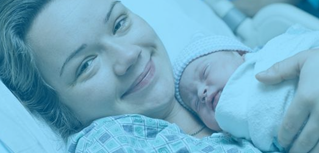|
| |
| |
|
|
| |
MD. (Obst. & Gynae.) Cal. |
|
| |
Consultant Gynaecologist, Obstetrician, |
|
| |
Laparoscopic Surgeon & Infertility Specialist |
|
| |
|
|
| |
|
|
| |
|
|
| |
|
|
|
|
|
| |
| |
ABOUT DOCTOR |
|
| |
|
A VASTLY EXPERIENCED SURGEON IN THE FIELD OF GYNECOLOGY, OBSTETRICS, LAPAROSCOPIC SURGERY, HYSTEROSCOPIC SURGERY, INFERTILITY AND UROGYNECOLOGY. |
|
| |
|
| |
|
|
|
| |
|
|
|
|
|
|
| |
TREATMENTS |
| |
| |
PREGNANCY COUNSELING |
 |
| |
Pregnancy options counseling is a form of psychological counseling that provides information and support regarding pregnancy, often unwanted pregnancy. |
|
|
OVARIAN CYST |
 |
| |
The ovary is one of a pair of reproductive glands in women that are located in the pelvis, one on each side of the uterus. Each ovary is about the size and shape of an almond. The ovaries produce eggs (ova) and female hormones. |
|
|
HIGH RISK PREGNANCY |
 |
| |
A high-risk pregnancy is one that threatens the health or life of the mother or her fetus. For most women, early and regular prenatal care promotes a healthy pregnancy and delivery without complications. |
|
|
| |
| ---------------------------------------------------------------------------------------------------------------------------------------------------------------------------------------------------------------------------------------------------------------------- |
|
| |
NORMAL DELIVERY |
 |
| |
Normal delivery of your baby is possible if you take right care of your health during pregnancy. Right diet and right exercise during pregnancy to ensure natural childbirth or normal delivery. |
|
|
HYSTERECTOMY |
 |
| |
A hysterectomy is a surgery to remove a woman's uterus (also known as the womb). The uterus is where a baby grows when a woman is pregnant. |
|
|
MYOMECTOMY |
 |
| |
Myomectomy is a surgical procedure to remove uterine fibroids. These are common noncancerous growths that appear in the uterus, usually during childbearing years, but they can occur at any age. |
|
|
| |
| |
| |
|
|
INFERTILITY |
|
Infertility is the inability of a person, animal or plant to reproduce by natural means. It is usually not the natural state of a healthy adult organism, except notably among certain eusocial species (mostly haplodiploid insects).
In humans, infertility may describe a woman who is unable to conceive as well as being unable to carry a pregnancy to full term. There are many biological and other causes of infertility, including some that medical intervention can treat. Estimates from 1997 suggest that worldwide "between three and seven per cent of all couples or women have an unresolved problem of infertility. Many more couples, however, experience involuntary childlessness for at least one year: estimates range from 12% to 28%." 20-30% of infertility cases are due to male infertility, 20-35% are due to female infertility, and 25-40% are due to combined problems in both parts. In 10-20% of cases, no cause is found.[3] The most common cause of female infertility is ovulatory problems which generally manifest themselves by sparse or absent menstrual periods. Male infertility is most commonly due to deficiencies in the semen, and semen quality is used as a surrogate measure of male fecundity.
|
 |
|
| |
|
| |
|
|
|
|
|
|
|